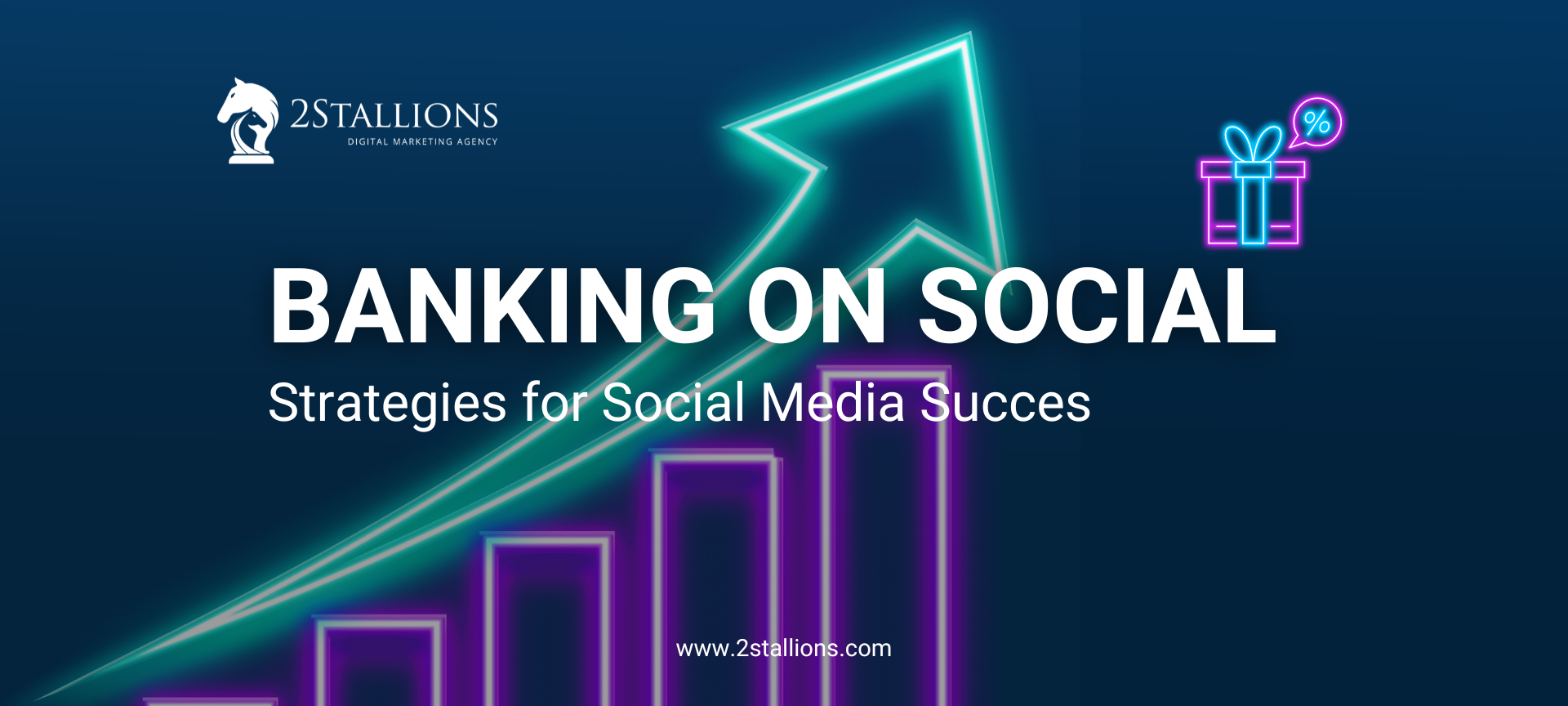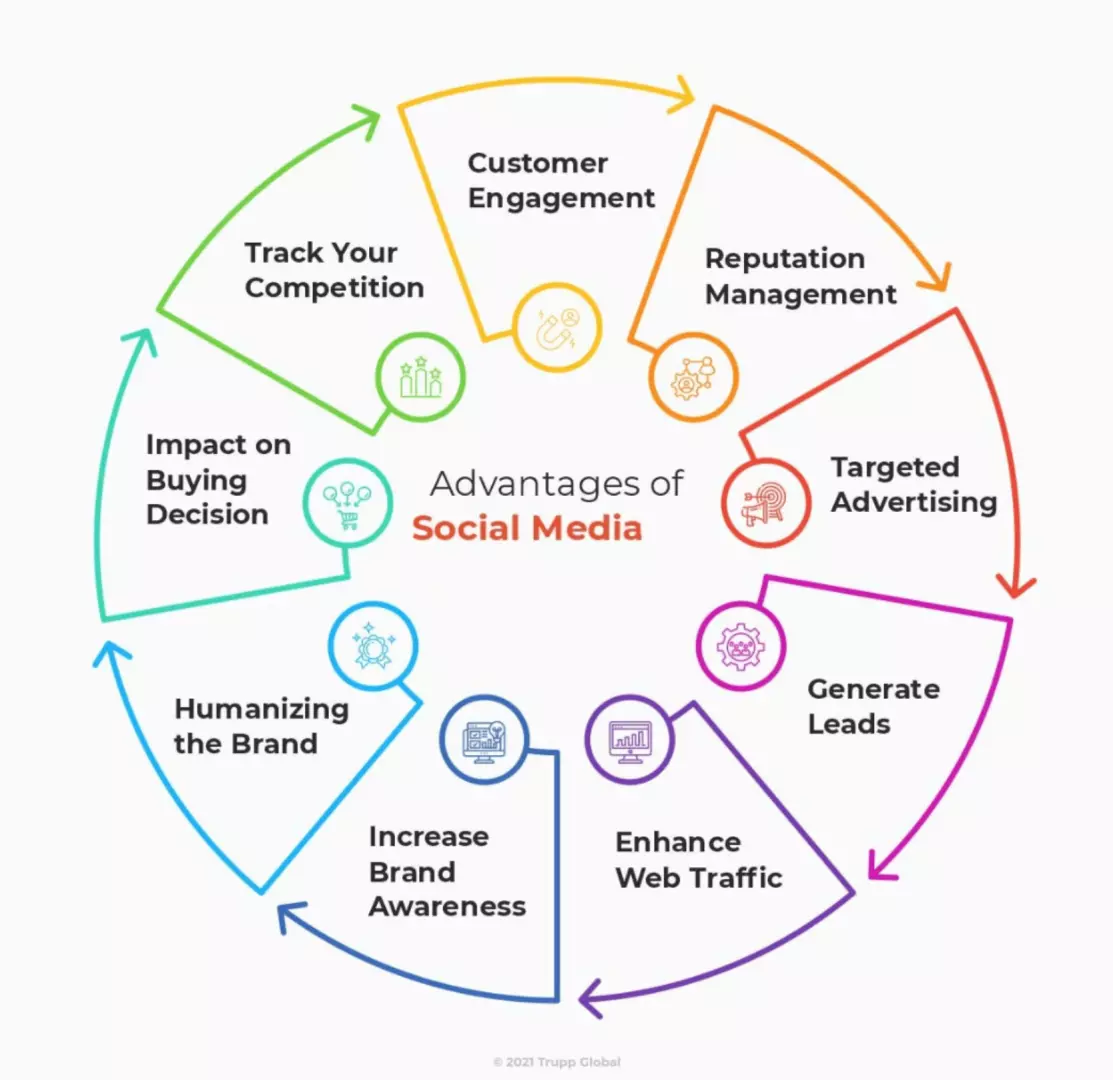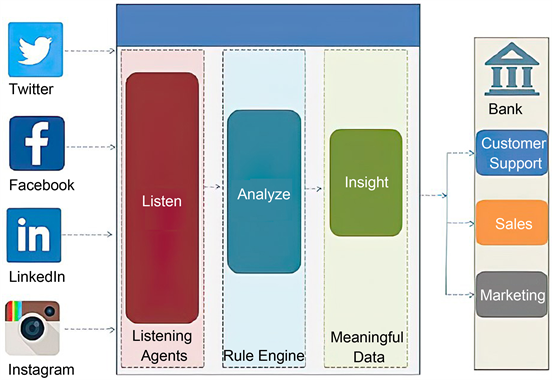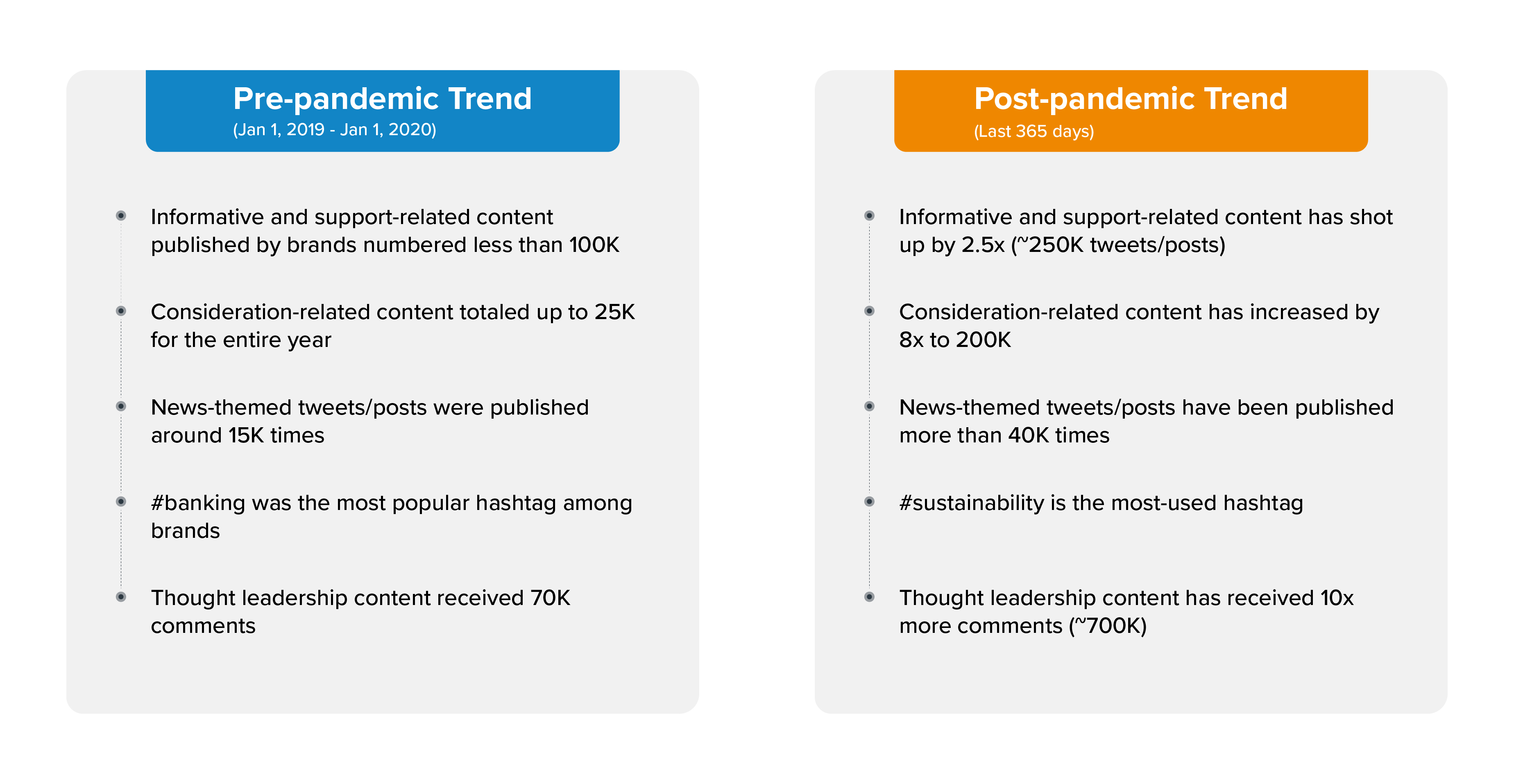SHARE

In today’s digital age, social media has become integral to our daily lives. It has revolutionised the way we communicate, share information, and interact with the world around us. It is no surprise that social media has also made a significant impact on the banking industry. Banks now leverage social media platforms to connect with customers, build brand awareness, and drive business growth. In this article, we will explore the importance of social media in banking and discuss strategies for success in this ever-evolving landscape.

(Source: BBN Times)
Understanding the Importance of Social Media in Banking
Social media has transformed how consumers engage with brands; banks are no exception. It provides a unique opportunity for financial institutions to foster meaningful connections with their customers, establish trust, and enhance their brand image. Banks can effectively communicate their values through social media, showcase their products and services, and promptly address customer concerns.
Moreover, social media platforms offered banks a direct channel to engage with customers more personally, allowing for tailored communication and targeted marketing strategies. By analysing customer interactions and feedback on social media, banks can adapt their services to better meet their clientele’s evolving needs and preferences.
The Transformation of Banking Through Social Media
Social media has revolutionised how banks operate, allowing them to reach a wider audience and engage with customers in real-time. Traditional banking methods have given way to digital banking, with many financial transactions now taking place online. Social media platforms have become a central hub for customer support, allowing banks to provide quick and efficient assistance to their customers.
Furthermore, integrating artificial intelligence and chatbots on social media platforms has enabled banks to offer round-the-clock customer service, enhancing the overall banking experience for users. These technological advancements have streamlined processes such as account inquiries, fund transfers, and even financial advice, making banking more convenient and accessible than ever before.
Why Social Media Matters in the Banking Industry
Social media is not just a marketing tool but a powerful platform for banks to cultivate customer relationships. By leveraging social media channels, banks can gain valuable insights into customer preferences, gather feedback, and tailor their products and services accordingly. Furthermore, social media helps banks stay relevant and competitive in a rapidly evolving industry.
In addition, social media serves as a platform for banks to educate customers on financial literacy, offering tips on budgeting, saving, and investing. This educational content not only empowers customers to make informed financial decisions but also positions banks as trusted advisors in the eyes of the public. By sharing valuable knowledge and expertise, banks can build credibility and loyalty among their customer base, fostering long-term relationships built on mutual trust and understanding.
(Source: Sprout Social)
Looking for a results-driven social media marketing agency? 2Stallions creates impactful campaigns that boost your brand awareness and foster meaningful audience engagement. Schedule a free consultation with us now.
Developing a Successful Social Media Strategy for Banks
A successful social media strategy is crucial for banks looking to make the most of their online presence. In today’s digital age, social media platforms have become powerful tools for banks to connect with customers and build brand loyalty. However, developing an effective social media strategy requires careful planning and consideration. Here are some key elements to consider when developing a banking social media strategy:
Key Elements of a Successful Banking Social Media Strategy
- Define your objectives: Clearly define what you want to achieve through your social media presence. Whether it’s increasing brand awareness, driving customer engagement, or generating leads, align your strategy with your overall business goals. By setting clear objectives, you can measure the success of your social media efforts and make necessary adjustments.
- Identify your target audience: Understanding your target audience’s demographics, needs, and interests is essential. Tailor your content to resonate with them and provide value. You can establish a strong connection with your audience and foster meaningful relationships by delivering relevant and engaging content.
- Choose the right platforms: Not all social media platforms are created equal. Research and identify the platforms where your target audience is most active and focus your efforts there. For example, if your target audience is young professionals, platforms like LinkedIn and Twitter may be more effective than Facebook or Instagram.
- Create engaging content: Your content should be informative, relevant, and shareable. Use a mix of text, images, videos, and interactive elements to keep your audience engaged. By providing valuable content that educates, entertains, or solves problems, you can position your bank as a trusted source of information and expertise.
- Develop a content calendar: Planning your content and ensuring a consistent posting schedule is vital. This will help you stay organised and maintain a steady flow of content. Having a content calendar can also ensure that your social media posts align with your overall marketing campaigns and promotions.
Steps to Create an Effective Social Media Plan
- Research: Conduct market research to understand the social media landscape, including competitor analysis and industry trends. You can identify opportunities and stay ahead of the curve by staying informed about what your competitors are doing and the latest industry developments.
- Set measurable goals: Establish specific goals for your social media efforts. This will help you track your progress and adjust your strategy accordingly. Whether it’s increasing your follower count, improving engagement rates, or driving website traffic, having measurable goals allows you to evaluate the effectiveness of your social media plan.
- Identify key metrics: Determine the key performance indicators (KPIs) that align with your goals. This could include engagement rates, reach, and conversion rates. By regularly tracking these metrics, you can assess the impact of your social media activities and make data-driven decisions to optimise your strategy.
- Create a content strategy: Developing a content strategy that aligns with your goals and resonates with your target audience is crucial. Plan different types of content to keep your social media feed diverse and interesting. Consider using a mix of educational content, behind-the-scenes glimpses, customer success stories, and promotional offers to keep your audience engaged and coming back for more.
- Monitor and analyse: Regularly monitor your social media performance using analytics tools. Analyse the data to gain insights and make data-driven decisions to optimise your strategy. You can refine your social media plan and maximise its impact by understanding what content performs well, which platforms drive the most engagement, and how your audience responds to different posts.
Developing a successful social media strategy for banks is an ongoing process. It requires continuous monitoring, analysis, and adaptation to stay relevant in an ever-changing digital landscape. By following these key elements and steps, banks can create a solid social media presence that enhances their brand image and fosters meaningful connections with their customers.
Remember, social media is not just about broadcasting your message; it’s about building relationships and engaging with your audience. By providing valuable content, listening to your customers’ feedback, and responding to their needs, banks can leverage social media to create a positive and impactful online presence.
(Source: The Financial Brand)
Navigating the Challenges of Social Media in Banking
While social media offers numerous benefits for banks, some challenges need to be addressed. Here are a few common pitfalls and how to avoid them:
Common Pitfalls and How to Avoid Them
One of the common pitfalls in banking social media is inadequate security measures. Banks must prioritise the protection of customer data and ensure robust security protocols are in place. Additionally, banks should avoid a one-size-fits-all approach and tailor their social media strategy to specific platforms and target audiences.
Overcoming Regulatory Hurdles in Social Media Use
As with any industry, banks must navigate regulatory requirements regarding social media usage. Compliance with data protection laws, privacy regulations, and financial industry guidelines is crucial. Banks should work closely with legal and compliance teams to develop social media policies that adhere to these regulations.
(Source: SCRIP.org)
Measuring the Success of Your Social Media Efforts
Measuring the success of your social media efforts’ success is essential to understand your strategy’s impact and make informed decisions for future improvements. Here are some key performance indicators (KPIs) to consider:
Key Performance Indicators for Banking Social Media
- Engagement: Monitor the number of likes, shares, comments, and retweets your social media posts receive. High engagement indicates that your content is resonating with your audience.
- Reach: Track the number of people who have seen your social media posts. A wider reach means you are expanding your brand’s visibility.
- Conversion rates: Measure the number of social media visitors who take a desired action, such as signing up for a newsletter or purchasing. This will help assess the effectiveness of your strategy in driving conversions.
- Brand sentiment: Analyse the sentiment of social media mentions and comments about your brand. Positive sentiment indicates a strong brand reputation.
- Customer satisfaction: Use surveys and feedback mechanisms to gauge customer satisfaction with social media interactions. This will help you identify areas for improvement.
Tools for Tracking Social Media Success in Banking
Several tools are available to track and analyse social media performance. These tools provide valuable insights into your audience, engagement rates, and overall success. Some popular tools include Hootsuite, Buffer, and Google Analytics. Select the tools that best suit your needs and budget.
(Source: Sprinklr)
Future Trends in Social Media for Banking
As technology advances, the future of social media in banking looks promising. Here are some predicted trends:
The Role of Emerging Technologies in Banking Social Media
Emerging technologies such as artificial intelligence (AI), chatbots, and virtual reality are set to significantly enhance the banking social media experience. These technologies will enable personalised interactions, faster customer support, and immersive experiences.
Predicted Social Media Trends in the Banking Sector
We can anticipate more integration between social media platforms and banking services. Social media may become a hub for everyday banking activities, enabling users to make payments, transfer funds, and access account information seamlessly. Social media platforms may also adopt more secure authentication methods to enhance user trust and security.
In conclusion, social media has transformed the banking industry, offering banks numerous opportunities to connect with customers and drive business growth. By understanding the importance of social media, developing a robust strategy, and overcoming challenges, banks can leverage this powerful tool to build brand awareness, enhance customer relationships, and stay ahead of the competition. As social media continues to evolve, keeping an eye on future trends will ensure that banks remain at the forefront of innovative digital experiences.
Frequently Asked Questions About Banking on Social: Strategies for Social Media Succes
What Are the Key Strategies For Social Media Success in Banking?
How Can Banks Use Social Media To Improve Customer Engagement?
Banks can improve customer engagement by providing timely responses to customer inquiries, offering personalised financial advice, and using social media platforms to celebrate customer milestones and success stories.
What Types of Content Are Most Effective For Banks on Social Media?
Effective content types for banks on social media include how-to guides on financial management, success stories of customers achieving their financial goals, and updates on new banking technologies and services.
What Are the Benefits of Banks Actively Using Social Media?
The benefits include enhanced customer service, increased brand awareness and loyalty, the ability to reach younger demographics who frequent social media, and the opportunity to monitor and respond to customer feedback in real-time.

















